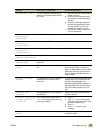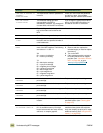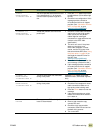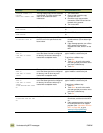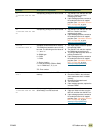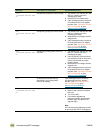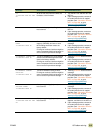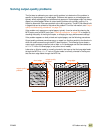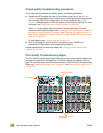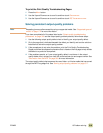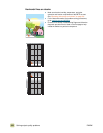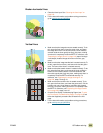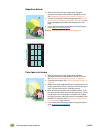
ENWW 10 Problem solving 317
Solving output-quality problems
The first step to addressing an output-quality problem is to determine if the problem is
specific to copied pages or printed pages. Problems that appear on printed pages also
typically affect copied pages, but problems that appear on copied pages might not always
appear on printed pages. When an output-quality problem occurs when copying, it is
helpful to determine if the same problem occurs during printing. The MFP has several built-
in pages that can be printed to help solve this problem. For more information, see “Output-
quality troubleshooting procedures” on page 318
If the problem only appears on copied pages, typically it can be solved by cleaning the
MFP copier parts and ADF parts (see “Cleaning procedures” on page 234 in chapter 9),
checking the quality of the original copies, or changing the copy enhancement settings.
If the problem appears on both printed and copied pages, use the following procedures.
Output-quality problems sometimes occur or repeat in a direction parallel to the direction in
which the media moves through the MFP (feed direction). The following figure shows a
output-quality problem printed on both a letter- or A4-sized page and the same defect on
an 11 x 17 inch or A3-sized page (or any other size of media).
Letter-size or A4-size media is normally oriented in the trays so that the long edge feeds
through the MFP first; 11 x 17 inch or A3-size media is normally oriented in the trays so
that the short edge feeds through the MFP first.
short edge
output-quality
problem
letter- or A4-size media
long edge
11 x 17 or A3-size media
long edgeshort edge
output-quality
problem
feed direction



